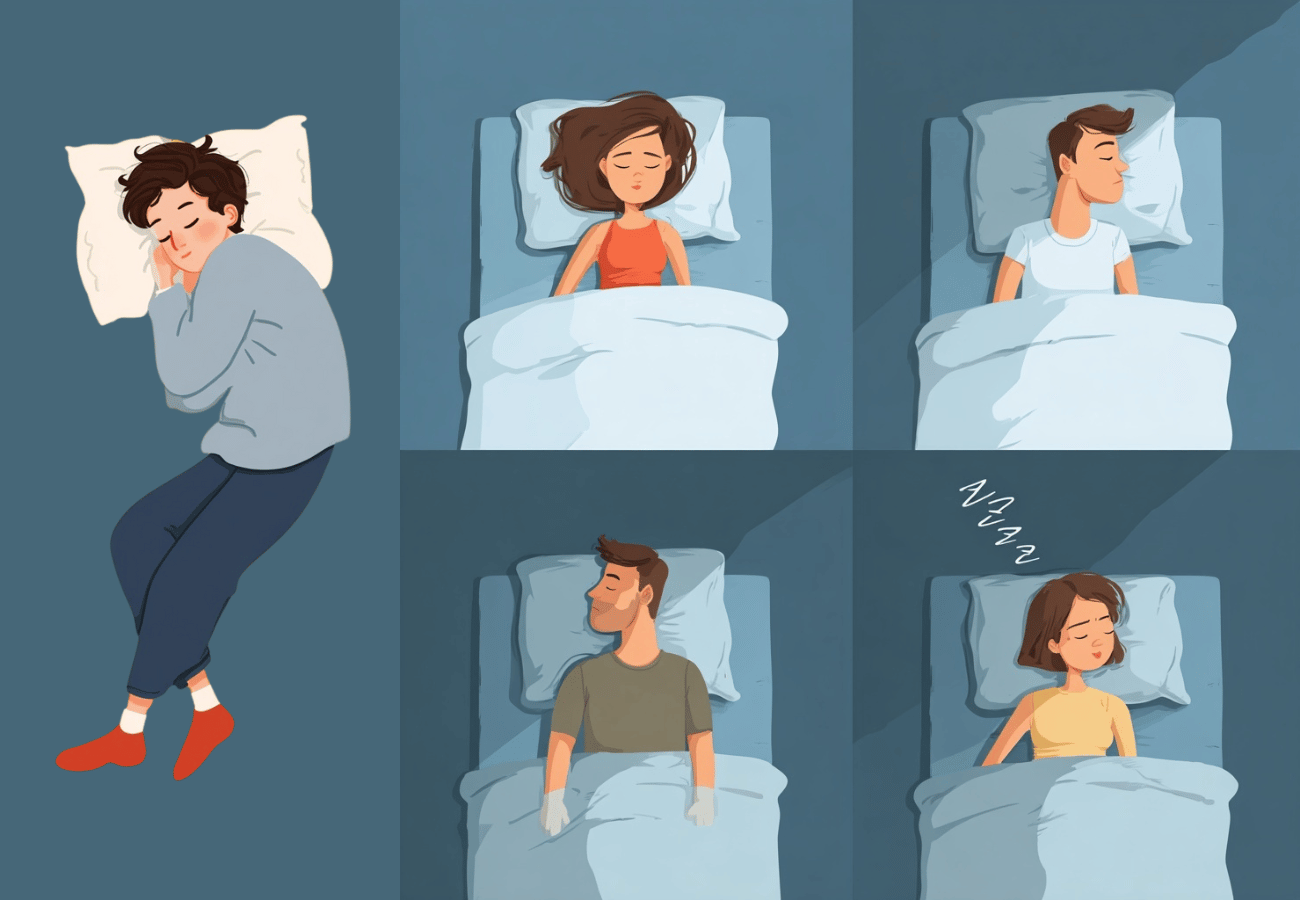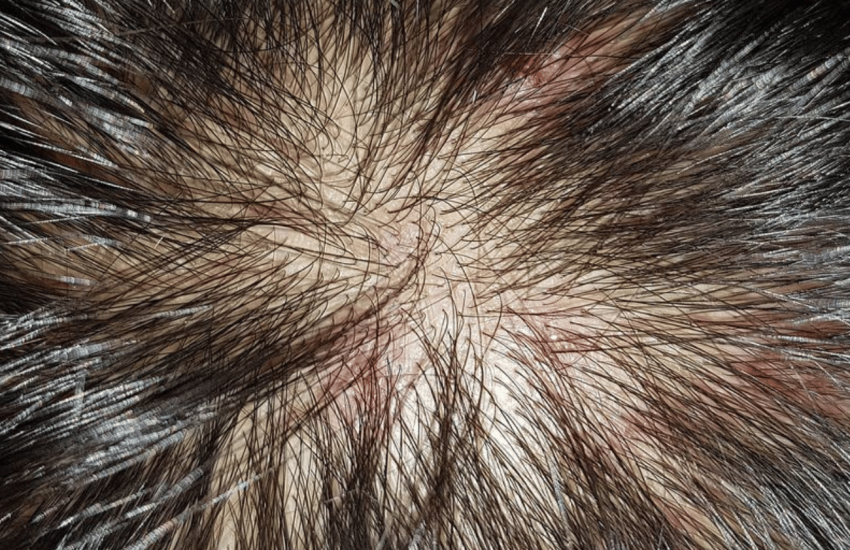How Your Sleeping Position Impacts Your Health — Benefits & Risks Explained 🛌
Meta Description: Discover how sleeping positions affect your health. Learn the benefits and risks of side, back, and stomach sleep plus tips to improve your posture.
Introduction: Why Your Sleeping Position Matters More Than You Think
We spend approximately one-third of our lives sleeping, yet many of us rarely consider whether we’re doing it correctly. While sleep duration often takes center stage in wellness conversations, the position you choose for those precious hours of rest can significantly influence your physical health, comfort, and overall well-being.
Your sleeping posture affects everything from spinal alignment and breathing patterns to digestion and even facial wrinkles. Whether you’re a dedicated side sleeper, a steadfast back sleeper, or someone who prefers resting on your stomach, understanding the relationship between sleeping positions and health can help you make informed choices that benefit your body for years to come.
In this comprehensive guide, we’ll explore the science behind different sleep positions, uncover the unique benefits and potential risks of each posture, and provide practical sleep posture tips to help you wake up feeling refreshed and pain-free. Let’s dive into how sleep affects your body and what you can do to optimize your nightly rest.
Understanding the Connection Between Sleep Posture and Physical Health
Before we examine specific positions, it’s essential to understand why your sleeping posture matters. During sleep, your body undergoes critical repair processes—muscles rebuild, tissues regenerate, and your spine decompresses after a day of bearing your body weight.
When you maintain proper alignment during sleep, you allow these natural healing processes to occur without interference. However, poor sleeping posture can create or exacerbate various health issues, including chronic back pain, neck stiffness, breathing difficulties, and even digestive problems.
The best sleeping posture is one that maintains the natural curves of your spine—particularly the cervical (neck), thoracic (mid-back), and lumbar (lower back) regions. When these curves are supported appropriately, pressure is distributed evenly across your body, reducing strain on muscles, joints, and internal organs.
Side Sleeping: The Most Popular Position
Side Sleeping Benefits
Side sleeping is the most common sleep position, with approximately 60% of adults choosing this posture. There are several compelling reasons why this position has earned such widespread preference.
Spinal Alignment and Back Health
When done correctly, side sleeping helps maintain the natural curvature of your spine. This position can be particularly beneficial for people experiencing lower back pain, as it reduces pressure on the lumbar region. The key is ensuring your spine remains straight from your neck down to your hips, rather than curving or twisting.
Improved Breathing and Reduced Snoring
Side sleeping keeps your airways open more effectively than other positions. This makes it an excellent choice for people who snore or those with sleep apnea. The position prevents your tongue and soft palate from collapsing to the back of your throat, which commonly obstructs breathing during sleep.
Enhanced Brain Health
Recent research suggests that side sleeping may help your brain clear out waste products more efficiently. During sleep, your brain’s glymphatic system—a waste clearance pathway—works to remove toxins, including proteins associated with Alzheimer’s disease. Side sleeping appears to optimize this cleaning process.
Better Digestion
Sleeping on your left side, in particular, may aid digestion and reduce acid reflux symptoms. This position uses gravity to help food move through your digestive system and keeps stomach acid where it belongs, potentially reducing nighttime heartburn.
Pregnancy Support
Medical professionals consistently recommend left-side sleeping for pregnant women, especially during the second and third trimesters. This position improves circulation to the fetus, reduces pressure on the liver, and enhances kidney function, helping to reduce swelling in the legs and feet.
Potential Risks of Side Sleeping
Despite its many advantages, side sleeping isn’t without potential drawbacks:
Shoulder and Hip Pressure
Resting on one side for extended periods can create pressure points on your shoulder and hip, potentially leading to discomfort or pain. This is especially true if your mattress is too firm or doesn’t provide adequate contouring.
Facial Wrinkles
Pressing one side of your face into a pillow night after night may contribute to the development of sleep lines and wrinkles over time. While this shouldn’t deter you from side sleeping if it’s comfortable, it’s worth noting for those concerned about skin aging.
Arm Numbness
Some side sleepers experience numbness or tingling in their bottom arm due to restricted blood flow. This typically resolves upon waking but can disrupt sleep quality.
Tips for Optimal Side Sleeping
To maximize side sleeping benefits while minimizing risks, follow these sleep posture tips:
- Use a supportive pillow that keeps your head aligned with your spine—not tilted up or down
- Place a pillow between your knees to keep your hips, pelvis, and spine aligned
- Choose a mattress that provides enough give to cushion your shoulder and hip while supporting your waist
- Alternate sides when possible to prevent overloading one shoulder or developing facial asymmetry
- Keep your arms positioned below your face level to maintain blood flow
Back Sleeping: The Alignment Champion
Benefits of Sleeping on Your Back
Back sleeping, or the supine position, is often recommended by healthcare professionals for its neutral spine alignment properties.
Optimal Spinal Support
When you sleep on your back, your weight is distributed evenly across your body’s largest surface area. This reduces pressure points and allows your spine to rest in a neutral position with its natural curves intact. This makes back sleeping an excellent choice for reducing back and neck pain.
Reduced Pressure on Joints
Unlike side or stomach sleeping, back sleeping doesn’t place undue pressure on any particular joint, making it beneficial for people with arthritis or joint pain.
Facial Skin Protection
Since your face doesn’t contact the pillow, back sleeping may help prevent wrinkles, acne breakouts from pillow friction, and skin irritation.
Minimized Acid Reflux
When done with proper elevation, back sleeping can help prevent stomach acid from flowing back into the esophagus, though it’s generally less effective for this purpose than left-side sleeping.
Risks Associated with Back Sleeping
Increased Snoring and Sleep Apnea Symptoms
The primary disadvantage of back sleeping is that gravity can cause your tongue and soft palate to fall backward, potentially blocking your airway. This makes snoring more likely and can worsen sleep apnea symptoms.
Lower Back Strain
Without proper support, back sleeping can increase strain on your lower back, particularly if you have an overly arched lumbar spine or if your mattress sags in the middle.
Not Recommended During Pregnancy
Back sleeping after the first trimester of pregnancy can reduce blood flow to the fetus and may cause dizziness in the mother due to the weight of the uterus pressing on major blood vessels.
Sleep Posture Tips for Back Sleepers
To improve health through sleep while lying on your back:
- Use a pillow that supports your neck’s natural curve without pushing your head too far forward
- Place a small pillow or rolled towel under your knees to maintain your lower back’s natural curve
- Consider a slightly elevated position if you experience acid reflux
- Avoid this position if you snore heavily or have been diagnosed with sleep apnea
- Ensure your mattress is firm enough to support your spine without sagging
Stomach Sleeping: The Controversial Position
Limited Benefits of Stomach Sleeping
Stomach sleeping is the least common position and often discouraged by health professionals, though it does offer one notable benefit:
Reduced Snoring
Like side sleeping, stomach sleeping can help keep airways open, potentially reducing snoring in some individuals. However, this benefit is generally outweighed by the position’s drawbacks.
Significant Risks of Stomach Sleep
Neck and Spine Strain
To breathe while sleeping on your stomach, you must turn your head to one side, which twists your neck and spine out of alignment. Maintaining this position for hours can lead to neck pain, stiffness, and headaches.
Lower Back Pressure
Stomach sleeping often causes your lower back to arch excessively, especially if your mattress is soft, placing significant strain on your lumbar spine and potentially leading to chronic pain.
Numbness and Nerve Compression
This position can compress nerves and restrict blood flow, leading to numbness, tingling, or pain in various parts of your body.
Facial Pressure
Similar to side sleeping but often more pronounced, stomach sleeping presses your face into the pillow, potentially contributing to wrinkles and skin irritation.
Making Stomach Sleeping Safer
If you find it difficult to break the stomach sleeping habit, these adjustments can help:
- Use a very thin pillow or no pillow at all under your head to reduce neck strain
- Place a pillow under your pelvis to reduce the arch in your lower back
- Choose a firm mattress to prevent excessive sinking
- Gradually transition to side sleeping by using body pillows to prevent rolling onto your stomach
- Stretch regularly to counteract the effects of nighttime misalignment
The Fetal Position: A Side Sleeping Variation
The fetal position—lying on your side with knees drawn toward your chest—deserves special mention as a popular variation of side sleeping.
Benefits: This position shares many side sleeping benefits, including reduced snoring and improved breathing. It can also be comforting and help people with lower back pain by opening up the spaces between vertebrae.
Risks: Curling up too tightly can restrict breathing and leave you feeling stiff in the morning. It may also contribute to joint pain if maintained too rigidly throughout the night.
Optimization: Sleep in a loose fetal position rather than curling tightly, and use a pillow between your knees for optimal spine alignment.
Combination Sleeping: Changing Positions Throughout the Night
Many people naturally shift positions multiple times during sleep. This movement is actually beneficial, as it prevents pressure from building up in any one area and promotes circulation.
If you’re a combination sleeper, focus on making each position as comfortable and supportive as possible with appropriate pillows and mattress support. The key is ensuring you can maintain good spinal alignment regardless of which position you naturally gravitate toward during the night.
Special Considerations: Matching Sleep Position to Your Health Needs
For Chronic Pain Sufferers
Back pain: Side or back sleeping with proper support typically works best Neck pain: Back sleeping with the right pillow height often provides relief Shoulder pain: Sleep on your opposite side or on your back Hip pain: Back sleeping or side sleeping with a pillow between knees
For Respiratory Issues
Sleep apnea: Side sleeping is generally recommended Snoring: Side or stomach sleeping (though stomach sleeping has other drawbacks) Congestion: Elevated back sleeping can help drainage
For Digestive Concerns
Acid reflux: Left-side or elevated back sleeping General digestion: Left-side sleeping may help
Choosing the Right Sleep Accessories
Your sleeping position’s effectiveness depends significantly on having the right support system.
Mattress Selection: Side sleepers typically need a softer mattress that contours to shoulders and hips, while back sleepers benefit from medium-firm support. Stomach sleepers need firmer surfaces to prevent excessive sinking.
Pillow Choice: Your pillow should fill the space between your head and mattress, maintaining neutral alignment. Side sleepers need thicker pillows, back sleepers need medium-height support, and stomach sleepers should use very thin or no pillows.
Additional Support: Body pillows, knee pillows, and lumbar rolls can significantly enhance comfort and alignment in any position.
Making the Transition to a New Sleep Position
If you’ve identified that your current sleeping position may be contributing to health problems, changing your sleep habits is possible with patience and consistency.
Gradual Adjustment: Use pillows strategically to make your new position more comfortable and to prevent rolling back to old habits. For example, place a body pillow behind your back to prevent rolling when transitioning from stomach to side sleeping.
Consistency: Stick with your new position for at least three to four weeks to allow your body to adjust.
Address Underlying Issues: Sometimes difficulty with certain positions relates to mattress quality, pillow support, or underlying health conditions that may need professional attention.
Conclusion: Finding Your Optimal Sleep Posture
Understanding the relationship between sleeping positions and health empowers you to make choices that support your body’s nighttime healing processes. While side sleeping offers the most universal benefits—from improved breathing and reduced snoring to better brain health—the best sleeping posture ultimately depends on your individual health needs, comfort preferences, and any specific medical conditions you may have.



